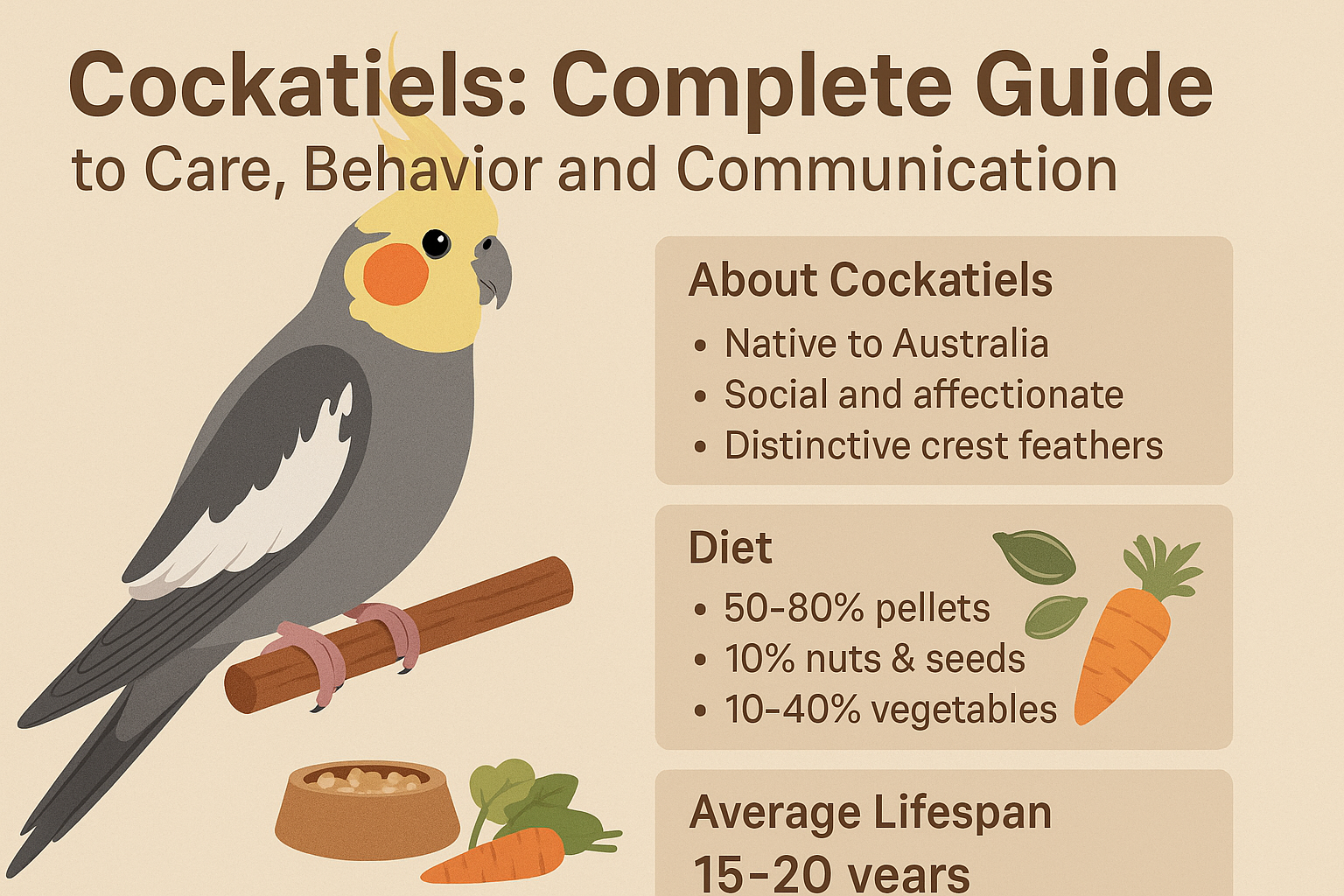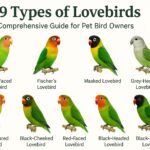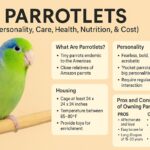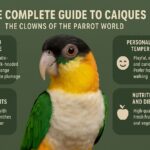Cockatiels have become one of the most beloved pet birds worldwide, ranking just behind budgerigars in popularity. Known for their friendly and social nature, these small parrots with distinctive crests make wonderful companions for bird lovers of all experience levels.
Native to Australia, cockatiels are admired for their playful personalities, gentle demeanor, and ability to mimic whistles and simple sounds.
Their expressive crests and charming behaviors add to their appeal, making them a favorite choice for families and first-time bird owners. With proper care, cockatiels can live 15 to 20 years, providing long-lasting companionship.
This guide will explore everything you need to know about cockatiel care, behavior, and communication to help you build a rewarding relationship with your feathered friend.
About Cockatiels
Cockatiels originate from Australia, where they naturally thrive in woodlands and scrublands. In the wild, these birds travel in flocks, primarily foraging for seeds, fruits, and insects on the forest floor. Their native habitat includes open areas with plenty of flying space and warm climate conditions.
These birds belong to the cockatoo family and are scientifically known as Nymphicus hollandicus. They’re relatively small, weighing between 70 to 120 grams, and feature a characteristic crest of feathers on their heads that helps express their emotions and mood states. One of their most distinctive physical features is their bright orange cheek patches, though the overall coloration can vary significantly between different mutations.
Common cockatiel color variations include:
- Normal gray (wild type)
- White-faced
- Lutino (yellow)
- Pied (patches of different colors)
With proper care, cockatiels can live remarkably long lives. Their average lifespan ranges from 15-20 years, though with excellent care, some cockatiels have been known to live up to 25-30 years. This makes them a significant long-term commitment for potential owners.
Cockatiels have earned their reputation as affectionate and social birds. They genuinely enjoy interacting with their human companions and develop strong bonds over time. Their communication system is quite elaborate, involving various whistles, chirps, and even mimicry of common household sounds, making them endlessly entertaining as pets.
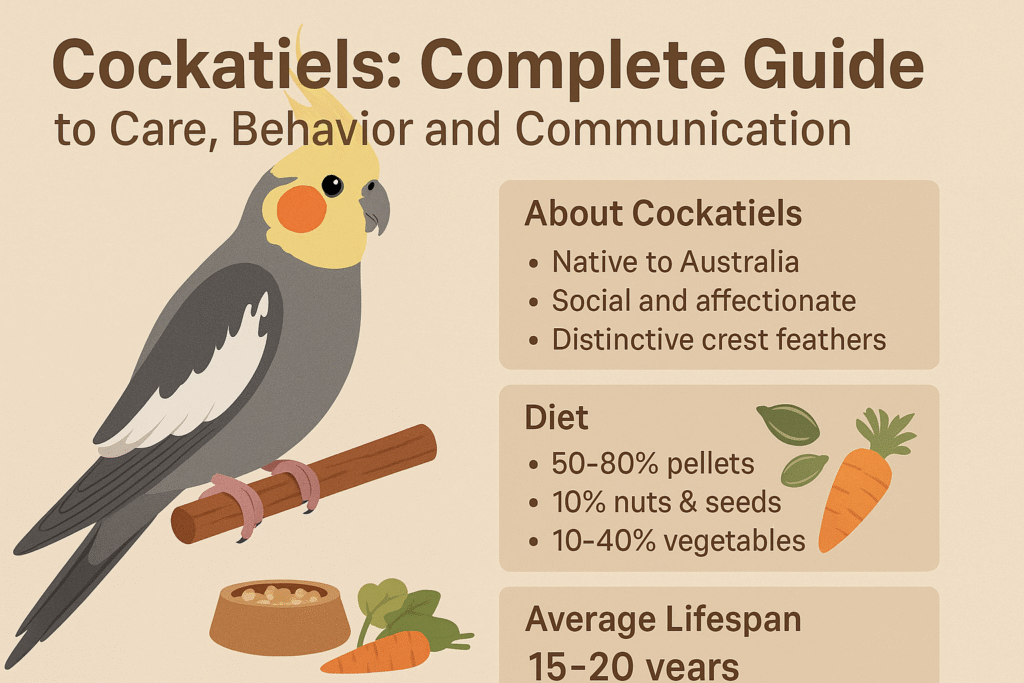
How to Prepare Before Bringing a Cockatiel?
Before bringing a cockatiel home, proper preparation ensures a smooth transition for both you and your new feathered friend. Cockatiels require specific housing, equipment, and environmental considerations to thrive in captivity.
First, assess if you have adequate space for a cockatiel cage and flight area. These birds need regular exercise and enough room to spread their wings. The location should be free from drafts but still receive good air circulation. Avoid placing cages in kitchens (cooking fumes can be harmful) or in direct sunlight, where overheating can occur.
The financial commitment extends beyond the initial purchase price of the bird. You’ll need to budget for:
- A properly sized cage
- Appropriate perches of varying diameters
- Food and water dishes
- Toys for mental stimulation
- High-quality food (pellets, seeds, fresh produce)
- Regular veterinary check-ups
Time commitment is another important factor. Cockatiels are social birds that require daily interaction. They need time outside their cages for exercise and bonding with their human companions. If you work long hours or travel frequently, you might need to consider whether you can provide the attention a cockatiel needs to remain happy and healthy.
Cockatiel Housing and Environment
The cage serves as your cockatiel’s primary home, so selecting the right one is crucial. For a single cockatiel, the cage should measure at a minimum of 20 inches wide, 20 inches deep, and 24 inches high, though larger is always better. Bar spacing should be between 1/2 to 5/8 inches to prevent escape or injury.
Horizontal bars on at least two sides of the cage allow for climbing, which cockatiels enjoy. The cage should include multiple perches of different diameters and materials to promote foot health and prevent pressure sores. Natural wood perches are excellent options as they provide varied textures for foot exercise.
Inside the cage, your cockatiel needs:
- Food and water containers are placed away from perches to prevent contamination
- Multiple toys are rotated regularly to prevent boredom
- A cuttlebone or mineral block for calcium
- A shallow dish for bathing opportunities
The location of the cage matters significantly. Place it at eye level in a room where family members spend time, as cockatiels are social and want to be part of household activities. Avoid placing the cage in direct sunlight, near drafty windows, or in the kitchen where cooking fumes could be toxic. Maintain a comfortable room temperature between 65-80°F (18-27°C) as cockatiels are sensitive to temperature extremes.
Diet and Nutrition for Cockatiels
A balanced diet is fundamental to your cockatiel’s health and longevity. The optimal diet consists of:
- 50-80% high-quality pellets
- 10% nuts and seeds
- 10-40% fresh vegetables
This ratio recommendation relates directly to caloric density. Cockatiels need about 30 calories per day for every 100 grams of body weight, with a typical bird consuming approximately 15 grams of food daily.
Understanding the caloric content of common cockatiel foods explains why balance is crucial:
- Pellets: approximately 35 calories per 10 grams
- Sunflower seeds: 58 calories per 10 grams
- Pumpkin seeds: 45 calories per 10 grams
- Safflower seeds: 51 calories per 10 grams
- Walnuts: 65 calories per 10 grams
- Almonds: 57 calories per 10 grams
- Vegetables like spinach: 2 calories per 10 grams
- Broccoli: 3 calories per 10 grams
- Corn: 9 calories per 10 grams
- Carrot: 4 calories per 10 grams
This caloric breakdown shows why an all-seed diet leads to obesity while an all-vegetable diet would result in malnourishment. A cockatiel eating only pumpkin seeds would consume more than double its daily caloric needs, while one eating only spinach would get just 10% of its necessary calories.
Fresh water should always be available and changed daily. Food dishes should be cleaned regularly to prevent bacterial growth. Monitor your bird’s weight and adjust portions accordingly, as obesity is a common problem in pet cockatiels fed inappropriate diets.
Cockatiel Health and Well-being
Maintaining your cockatiel’s health requires awareness of common illnesses and preventive measures. Regular veterinary check-ups with an avian specialist are essential, as birds often hide signs of illness until conditions become advanced.
Common health issues affecting cockatiels include:
Respiratory Infections
Caused by bacteria, viruses, or fungi, respiratory infections present with symptoms like sneezing, nasal discharge, and labored breathing. Poor air quality, drafts, and stress contribute to these conditions. Maintaining clean air and a stable environment helps prevent these issues.
Psittacosis
This bacterial infection is highly contagious among birds and can even transfer to humans. Watch for lethargy, respiratory distress, and green droppings. Good hygiene and minimizing stress are key preventive measures, while prompt veterinary treatment is essential if symptoms appear.
Fatty Liver Disease
A diet high in seeds and low in nutrients commonly leads to fatty liver disease. Symptoms include obesity, lethargy, and abdominal swelling. Prevention involves feeding a balanced diet rich in pellets and vegetables rather than seeds alone.
Egg Binding
Female cockatiels sometimes cannot pass eggs, which can be life-threatening. Signs include straining, lethargy, and abdominal swelling. A calcium-rich diet and proper breeding conditions help prevent this condition, but immediate veterinary care is necessary if it occurs.
Daily observation is your best tool for early detection of health problems. Be alert for changes in:
- Droppings (consistency, color, amount)
- Eating and drinking habits
- Activity levels and behavior
- Breathing patterns
- Feather condition
- Posture and balance
Cockatiel Behavior and Communication
Cockatiels are remarkably communicative birds with a range of vocalizations and body language signals that indicate their moods, needs, and feelings. Understanding these signals helps build a stronger bond with your pet.
Vocalizations
Cockatiels use various sounds to express themselves:
Whistling and singing: Generally indicate happiness and contentment. Many cockatiels learn to whistle tunes or create their own melodies, especially when seeking attention.
Chirping: Short, repetitive chirps often signal curiosity or mild attention-seeking behavior.
Screaming: Loud, harsh sounds typically express fear, excitement, or demand attention. Persistent screaming might indicate stress or boredom that needs addressing.
Hissing: A defensive sound that signals fear, discomfort, or annoyance. Respect your bird’s space when you hear this sound.
Beak Clicking/Grinding: When accompanied by fluffed feathers and sleepy eyes, this often indicates contentment, similar to a cat’s purring.
Male cockatiels might bang their beaks against perches, food cups, toys, or the ground to attract attention from potential mates or human companions.
Body Language
Physical cues provide additional insight into your cockatiel’s state of mind:
Head Bobbing: Can indicate excitement, curiosity, or, in younger birds, a request to be fed.
Crest Position: The position of a cockatiel’s crest feathers clearly communicates its emotional state:
- Fully upright: Alarmed, startled, or extremely curious
- Slightly raised: Alert and interested
- Flattened against head: Defensive, angry, or fearful
- Relaxed position: Content and calm
Wing Displays: Wings held slightly away from the body or wing flapping while perched often indicates excitement or desire for attention.
Tail Wagging: Similar to dogs, cockatiels sometimes wag their tails when happy or excited7.
Training and Socialization
Cockatiels are intelligent birds capable of learning various commands and tricks. Consistent, patient training strengthens your bond while providing mental stimulation for your bird.
Start training with simple step-up commands, encouraging your cockatiel to perch on your finger on cue. Use positive reinforcement through treats, praise, or head scratches rather than punishment, which can damage trust. Keep sessions short (5-10 minutes) but frequent for best results.
Socialization is crucial for cockatiels from an early age. Regular, gentle handling helps your bird become comfortable with human interaction. Introduce new experiences gradually to avoid overwhelming your pet. Remember that trust builds slowly, so remain patient throughout the process.
If you work long hours or cannot provide adequate social interaction, consider getting a pair of cockatiels. These birds are naturally social and benefit from companionship, though a bonded pair may become less interested in human interaction.
Daily Care Routine for Cockatiels
Establishing a consistent care routine helps your cockatiel feel secure while ensuring all their needs are met. A typical daily routine might include:
Morning:
- Fresh food and water
- Cage cleaning (spot clean droppings)
- Social interaction before work/school
Afternoon/Evening:
- Out-of-cage time for exercise and play
- Training session
- Fresh vegetables or treats
- Social interaction
Weekly Tasks:
- Complete cage cleaning and disinfection
- Toy rotation to maintain interest
- Bath opportunities (misting or shallow dish)
- Health check (weight, droppings, behavior)
Allow your cockatiel at least 2-4 hours outside the cage daily when possible, in a bird-safe room where they can exercise and explore. This prevents obesity and boredom while satisfying their natural curiosity.
Is a Cockatiel the Right Pet for You?
Cockatiels make wonderful companions for the right owners. Before committing to cockatiel ownership, honestly assess whether your lifestyle, home environment, and expectations align with what these birds need.
Considerations include:
- Lifespan commitment of 15-20+ years
- Daily social interaction requirements
- Noise tolerance (cockatiels can be vocal)
- Time available for care and bonding
- Financial ability to provide proper housing, diet, and veterinary care
- Home environment, safety, and space
- Allergies or respiratory conditions that might be affected by bird dander
- Travel plans and arrangements for bird care during absences
For people willing to meet these needs, cockatiels offer affection, entertainment, and companionship that few other pets can match. Their playful antics, capacity for bonding, and charming personalities make them cherished family members in many households worldwide.
Conclusion
Cockatiels represent one of the most rewarding birds to keep as pets, offering a wonderful balance of interactive personality and manageable care requirements. Their capacity for affection, communicative behaviors, and relatively long lifespan make them true companions rather than simply pets.
Success with cockatiels comes from understanding their natural behaviors, meeting their specific dietary and environmental needs, and committing to regular social interaction. With proper care, these charming Australian natives can thrive in domestic settings, bringing joy and companionship to their human families for many years.
Whether you’re drawn to their distinctive appearance, melodious whistling, or social nature, cockatiels have rightfully earned their place among the most beloved pet birds. The effort invested in their proper care returns manifold in the unique bond that develops between these intelligent birds and their human guardians.
- Parrotlets (Personality, Care, Health, Nutrition, & Cost) - June 20, 2025
- Caique (Personality, Care, Health, & Nutrition) - June 20, 2025
- The Complete Guide to Golden Retrievers - June 9, 2025
